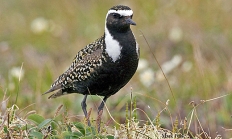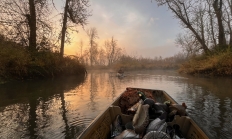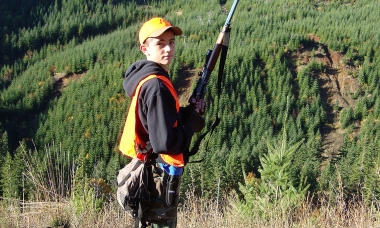
Search myodfw.com
Find maps, boundary descriptions and the percent public land for the Malheur River Unit.
Invasive species are animals and plants that are not native to an ecosystem and that cause economic or environmental harm. Not all non-native species are invasive, however many become a serious problem. They can aggressively compete with Oregon's native wildlife for food and habitat.
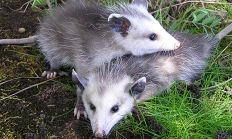
Sea turtles are federally protected under the Endangered Species Act of 1973. NOAA Fisheries is responsible for conservation and recovery of sea turtles in the marine environment, while the U.S. Fish and Wildlife Service is lead on conservation and recovery of sea turtles on nesting beaches.
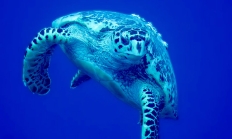
Oregon's black bears don't always live up to their name. Their coloring can be blonde, brown, cinnamon, and of course, black. Check ODFW's Living with Wildlife, Bears for great tips on working or recreating in bear country, homeowner checklist to keep bears at bay, and more.

The Greater sandhill crane is Oregon's tallest bird. This large majestic crane has a guttural gurgling or bugling call, and is easily noticed in flight by its profile, with long neck and head extending straight ahead and long legs trailing behind. The Greater sandhill crane is distinguished by its red crown and white cheek patches, contrasting with with a light gray body. Fledged young resemble adults, but have a feathered forehead, a lighter tawny plumage, and lack the red crown and white cheek patches during their first fall. Fledged young have a squeaky cheap call often heard in flight during
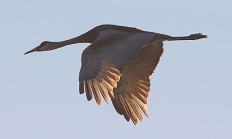
Find maps, boundary descriptions and the percent public land for the Beatys Butte Unit.
Swans, ducks and geese belong to the Anatidae family and occur on all continents. Special oils let their feathers shed water, so they are adapted for swimming and floating, and some are even talented divers. For tips on discouraging geese from overwhelming your yard, check our Living with Wildlife, Birds page.

The Eastern gray squirrel is the smallest member of the genus in Oregon. This squirrel was introduced into Oregon and can now be found in Salem, Portland, Milwaukie, and Vale. All populations in Oregon have been found in urban areas. This squirrel is active throughout the year, activity restricted to daylight hours. Photo from Washington Fish and Wildlife

Searching for frogs and salamanders is a great way to introduce kids to the wonders of Oregon's wildlife and the great outdoors. Learn more about their various habitat needs and you'll increase your chances of seeing one of these unique species. Remember to leave no trace to preserve their habitat. Listen to a chorus of treefrogs, and check out our fun facts on Oregon's frogs.
Oregon has one species of kingfisher, the raucous Belted kingfisher and 12 woodpecker species. Six woodpeckers are Oregon Conservation Strategy Species of management concern and in need of conservation. Famous for their hammering and hole drilling, woodpeckers might decide your home looks like a good place to set up shop. Learn how to discourage this on our Living with Wildlife, Birds page.

Find maps, boundary descriptions and the percent public land for the Stott Mountain Unit.

This group of animals is common throughout Oregon in various locations depending on species. Oregon just has one marmot, the yellow-bellied marmot and two of its squirrels are on the Oregon Conservation Strategy Species list: the Washington ground squirrel and the Western gray squirrel. Check our Living with Wildlife, Tree Squirrels page for tips on preventing conflicts, trapping, species status and recommended conservation actions.

Find maps, boundary descriptions and the percent public land for the Sprague unit.
Find maps, boundary descriptions and the percent public land for the Whitehorse Unit.
Find maps, boundary descriptions and the percent public land for the Columbia Basin Unit.
Find maps, boundary descriptions and the percent public land for the Klamath Falls Unit.
The American bullfrog is a non-native invasive frog that survives and reproduces very successfully in Oregon. Bullfrogs aggressively compete for food and living space with our native frogs. They eat many types of native wildlife including other frogs, young pond turtles, and ducklings. Bullfrogs can lay almost 10 times more eggs than native frogs and can quickly out number them. Photo by Kathy Munsel

Nearly wiped out in much of their historic range by early fur trappers, American beavers are now restored to many state waters due to improved management, greater awareness of their benefits, and less demand for fur. The beaver has been so significant in Oregon's history that it is our state symbol, the mascot for Oregon State University, and holds honor on the reverse side of Oregon's state flag. ODFW has many resources on our Living with Wildlife, Beaver page.

These elegant shorebirds are found as often in dry or damp upland areas as they are on mudflats or beaches. The plain brown immature birds of autumn become spangled with black and gold as breeding approaches. It is an occasional to uncommon migrant in western Oregon (mainly coastal) and locally rare, irregular migrant in eastern Oregon, with most reports at Malheur National Wildlife Refuge, in the Klamath Basin (summer) and in Umatilla County. Hear the call of the American golden-plover Photo by Mark Peck, Flickr
